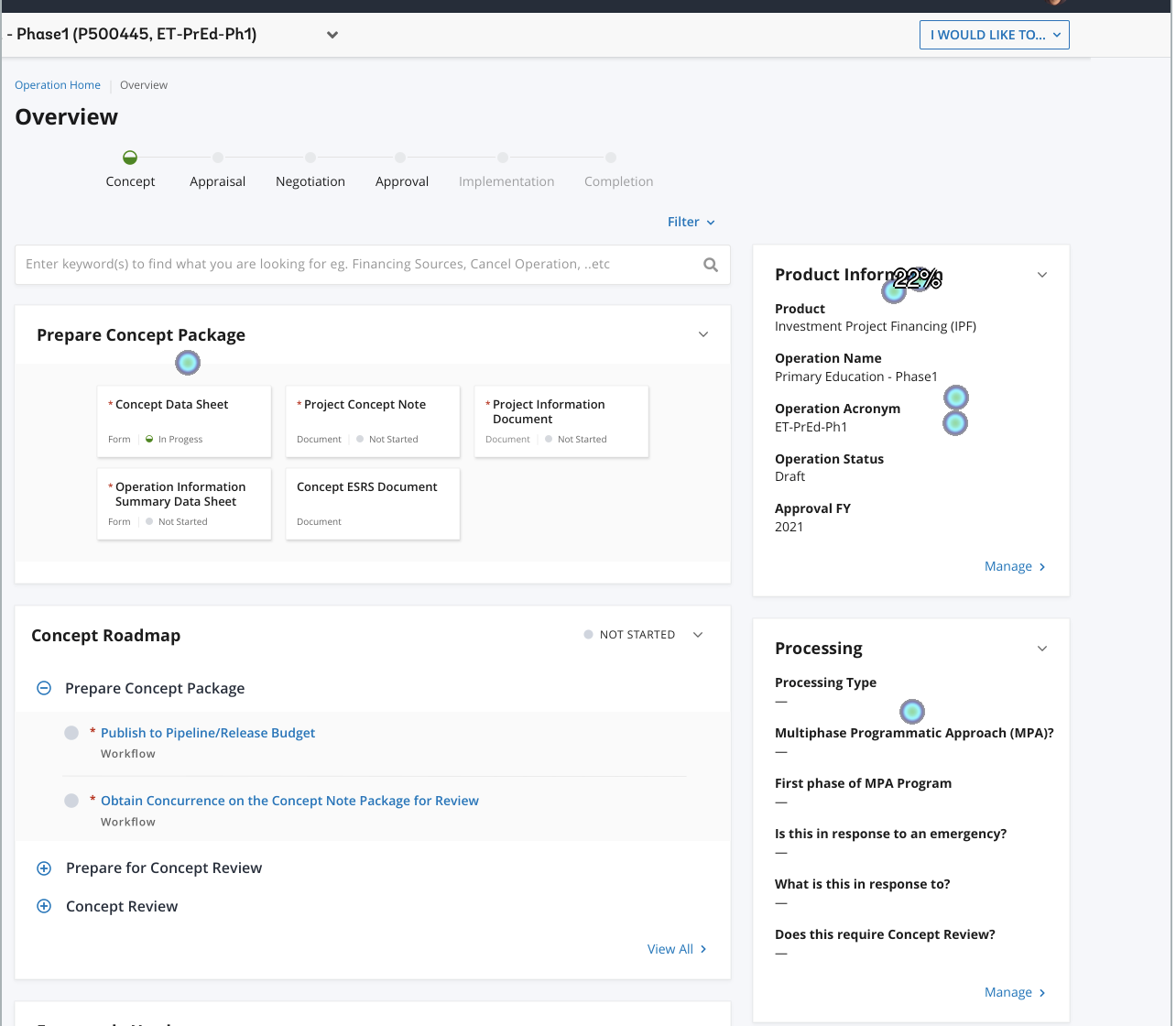World Bank Project Tracking (Lending)
Skills:
User Research, Stakeholder Engagement, Storytelling, Prototyping
Tools:
Sketch App, Optimal Workshop, Airtable, Dovetail
First click testing in Optimal
overview
This engagement began as redesign of one of the most important and widely used tools to track lending strategies at the World Bank. The goal of this engagement was to identify areas of improvement for a particular section and make recommendations for improvement based on research findings.
Research Strategy
As the first UX Designer to do any user research for this tool, I started with a protocol calling for 10 moderated usability testing sessions. Questions were purposefully generative (for more big picture product level improvements) and evaluative (mockups attempt to fix help desk ticket-informed issues) approach.
I used first click testing in Optimal Workshop, Dovetail and a tagging methodology.
Dovetail tags
Deliverables
For stakeholders, I like to use a Powerpoint or Keynote presentation telling a story of the research, its results, and my subsequent recommendations. This helps with the ‘why’ of design and recommendations, and helps get both the team and stakeholders on board.
In this case, I also included an Airtable spreadsheet detailing out recommendations with a ranking based on user needs. An InVision mockup was used as a visualization tool for recommendations. As part of the team’s operationalizing of research, I also offered a Dovetail report for in-depth analysis and data backup tied to recommendations.
Some of the generative insights found:
Overall, users felt positive towards the redesign.
Users used their current mental models to complete tasks, which either helped or hindered their ability to complete tasks utilizing a newer design.
Users commented that the design was headed in the right direction with functionality improvements from the legacy product.
Users were able to successfully navigate the key points, demonstrated by 78% of users finding where to start processing their project in a particular section.
Results
Almost all of my changes were included in development, as can be seen in the screenshot from the Product Owner (PO) below. Additionally, this research initiative served to convince the team they needed to keep our team on in a permanent research/product design capacity.
PO implementation status of my recommendations.
I made some changes to my research processes as a result of this engagement. Some of the takeaways include:
Processes established with teams early on can be hard to let go of (10 user interviews per cycle) and should be approached with a bigger picture in mind always.
Have Product Team sign off of on plan, timeline, and roles before starting research. Include timeline/project impact if research prerequisites are not delivered on time.
Dry runs are important for moderated usability testing when stakeholders are in the room. Be prepared and build in time to make changes based on this, and build it into the process for every sprint.
Establish processes for stakeholder commentary along the way, including internal chats during interviews and time built-in at the end of the interview to have them answer questions if needed.





